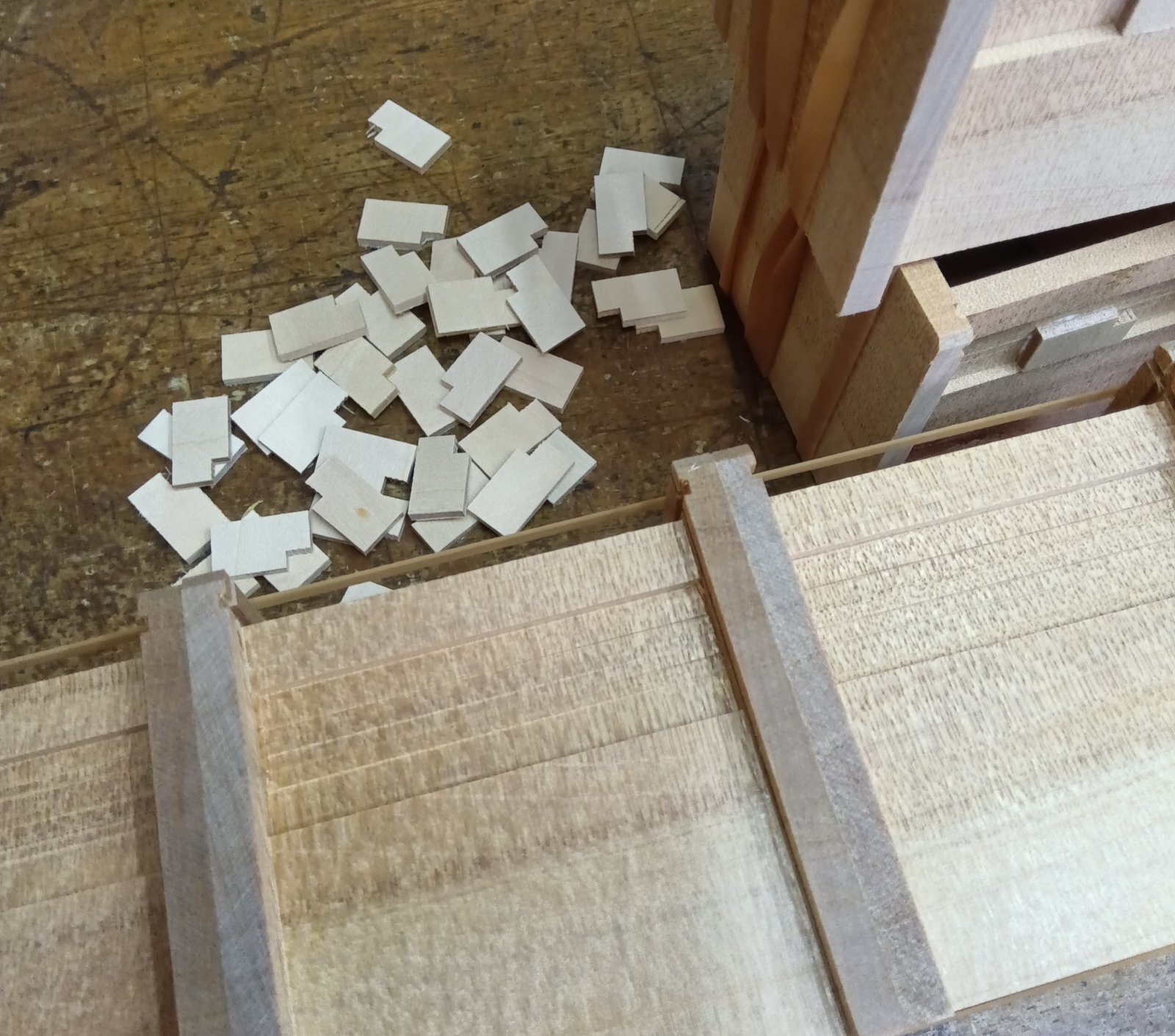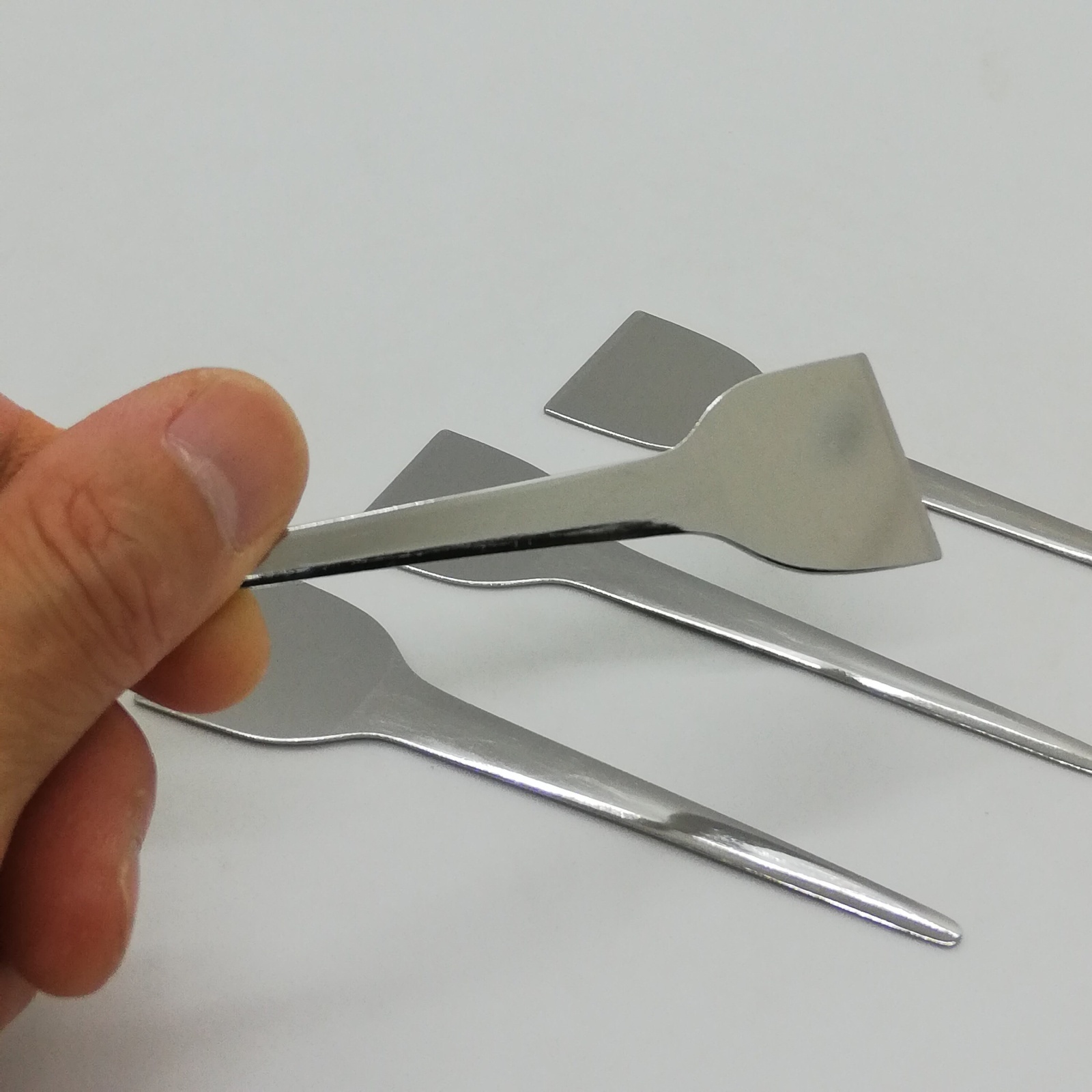3 sun cube box (2)
Today was a rainy day with low temperatures, making for rather unfavorable conditions, but I managed to make progress on several tasks. The photo shows the process of attaching parts to the structural section of the 3-sun cube 14-step Japanese puzzle box. If you look closely, you'll notice a groove about 2 cm long carved into the axis, where several components will be attached. For this cube box, six small parts are affixed to each box. The width of this groove matches the dimensions used for the 12-step and 14-step mechanisms of the 5-sun-sized boxes. Although the overall size of the cube box is closer to a 3-sun or 4-sun box, the height dimension aligns with that of a 5-sun box due to its taller profile.
The depth of this groove is approximately 2 to 3 millimeters, and the thickness of the parts is also around 2 to 3 millimeters. A small square wooden piece, called a "botchi," which is linked to the "kannuki (slide key)" mechanism, catches on this thickness to create the steps for the puzzle box's mechanism.
Although not shown in the photo, I also worked on the aruki (moving panels) for the 3-sun cube box today. While I have completed crafting the aruki, the attachment process will take place on another day. Ideally, this should be done on a dry, sunny day due to the impact of humidity on the wood.
As I mentioned earlier, this box has a taller height, which also means the aruki is longer, and the contact area with the main body is larger. This can make the aruki movement tighter. To address this, I make the aruki slightly looser in such cases to ensure that the mechanism remains functional and doesn’t become too tight to move after completion.
About ten years ago, alongside making puzzle boxes, I was also involved in introducing and selling Japanese culture and products. Although this activity is currently on hiatus, I occasionally like to share some of the items that were particularly popular back then.
This time, I’d like to introduce the small spatula shown in the photo. Those familiar with Japanese cuisine may recognize it as a tool used for eating "monjayaki", a traditional Japanese dish. You may already know about okonomiyaki, a more famous Japanese dish, which is somewhat similar. While okonomiyaki resembles a pancake that holds its shape, monjayaki is much softer and doesn’t solidify.
Both are cooked on an iron griddle, but monjayaki is so soft that it can’t be picked up with chopsticks or a fork. Instead, this spatula is used to scoop it up bit by bit while eating. A monjayaki size is typically 20–30 cm in diameter, so it’s usually shared among a few people rather than eaten alone. Although its appearance might seem messy😅 or unappealing, the flavor is truly delicious. It is often seasoned with sauces or Japanese-style soy-based flavors.
There are many regional varieties of monjayaki across Japan, but it is generally considered a dish originating from Tokyo. It’s a type of local or street food, enjoyed casually, often as a snack. Many people from other countries have tried monjayaki, and this “monjayaki spatula” has become a popular item 😄
The depth of this groove is approximately 2 to 3 millimeters, and the thickness of the parts is also around 2 to 3 millimeters. A small square wooden piece, called a "botchi," which is linked to the "kannuki (slide key)" mechanism, catches on this thickness to create the steps for the puzzle box's mechanism.
Although not shown in the photo, I also worked on the aruki (moving panels) for the 3-sun cube box today. While I have completed crafting the aruki, the attachment process will take place on another day. Ideally, this should be done on a dry, sunny day due to the impact of humidity on the wood.
As I mentioned earlier, this box has a taller height, which also means the aruki is longer, and the contact area with the main body is larger. This can make the aruki movement tighter. To address this, I make the aruki slightly looser in such cases to ensure that the mechanism remains functional and doesn’t become too tight to move after completion.
About ten years ago, alongside making puzzle boxes, I was also involved in introducing and selling Japanese culture and products. Although this activity is currently on hiatus, I occasionally like to share some of the items that were particularly popular back then.
This time, I’d like to introduce the small spatula shown in the photo. Those familiar with Japanese cuisine may recognize it as a tool used for eating "monjayaki", a traditional Japanese dish. You may already know about okonomiyaki, a more famous Japanese dish, which is somewhat similar. While okonomiyaki resembles a pancake that holds its shape, monjayaki is much softer and doesn’t solidify.
Both are cooked on an iron griddle, but monjayaki is so soft that it can’t be picked up with chopsticks or a fork. Instead, this spatula is used to scoop it up bit by bit while eating. A monjayaki size is typically 20–30 cm in diameter, so it’s usually shared among a few people rather than eaten alone. Although its appearance might seem messy😅 or unappealing, the flavor is truly delicious. It is often seasoned with sauces or Japanese-style soy-based flavors.
There are many regional varieties of monjayaki across Japan, but it is generally considered a dish originating from Tokyo. It’s a type of local or street food, enjoyed casually, often as a snack. Many people from other countries have tried monjayaki, and this “monjayaki spatula” has become a popular item 😄

